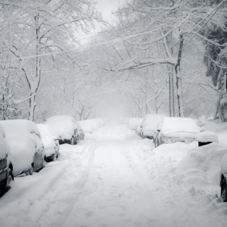 The Importance of Frost Dates: Frost dates, also known as the last frost date and the first frost date, mark the beginning and end of the frost-free growing season in a particular region. Knowing the average dates of the last spring frost and the first fall frost is essential for planning and timing garden activities, including planting, transplanting, and harvesting.
The Importance of Frost Dates: Frost dates, also known as the last frost date and the first frost date, mark the beginning and end of the frost-free growing season in a particular region. Knowing the average dates of the last spring frost and the first fall frost is essential for planning and timing garden activities, including planting, transplanting, and harvesting.
In regions with short growing seasons and frequent frosts, gardeners must be mindful of frost dates to avoid damage to tender plants. Frost can injure or kill young seedlings, delay plant growth, and reduce yields, making it crucial to wait until the threat of frost has passed before planting sensitive crops or tender annuals.
Effects of Frost on Native Plants: Native plants have evolved to thrive in their local environments, including coping with seasonal variations such as frost. However, even native species can be vulnerable to frost damage, especially when young or newly planted. Frost can cause cell damage and tissue death in plant leaves, stems, and buds, compromising their health and vitality.
For gardeners incorporating native plants into their landscapes, understanding frost dates is essential for ensuring the success of their plantings. By waiting until after the last frost date to plant native species, gardeners can give their plants the best chance of establishing strong root systems and thriving in their new surroundings.
Frost Dates & Shipping Native Plants
 At Garden for Wildlife, we are committed to providing our customers with healthy, robust native plants that will thrive in their gardens. One of the ways we uphold this commitment is by waiting to ship plants until after the danger of frost has passed in our customers' regions. You can reference our shipping timeframes to understand when your plants will arrive.
At Garden for Wildlife, we are committed to providing our customers with healthy, robust native plants that will thrive in their gardens. One of the ways we uphold this commitment is by waiting to ship plants until after the danger of frost has passed in our customers' regions. You can reference our shipping timeframes to understand when your plants will arrive.
Shipping plants too early, before the threat of frost has passed, increases the risk of damage during transit and upon arrival. Exposure to cold temperatures during shipping can stress plants and compromise their health, making them more susceptible to transplant shock and other issues once planted in the garden.
By waiting to ship plants until after the last frost date in a customer's region, we ensure that the plants arrive at their destination healthy, vigorous, and ready to thrive in their new environment. This not only enhances the customer experience but also increases the likelihood of long-term success for the plants in their gardens.
Planting or Gardening Around Frost Dates
While waiting for the last frost date to pass, there are several steps gardeners can take to prepare for the upcoming growing season:
 Choose Hardy Native Plants: When selecting plants for your garden, choose native species that are well-suited to your climate and growing conditions. Native plants are adapted to local environmental conditions, including frost, and are more likely to thrive in your garden with minimal care.
Choose Hardy Native Plants: When selecting plants for your garden, choose native species that are well-suited to your climate and growing conditions. Native plants are adapted to local environmental conditions, including frost, and are more likely to thrive in your garden with minimal care.
Protect Tender Plants: If frost is forecasted after the last frost date, protect tender plants by covering them with frost blankets, row covers, or other protective barriers. These can help insulate plants and prevent damage from frost.
Monitor Weather Conditions: Stay informed about local weather conditions and frost advisories leading up to and after the last frost date. Be prepared to take action to protect plants if frost is predicted, and avoid planting sensitive species until the risk of frost has passed.
Frost dates play a crucial role in gardening, influencing when to plant, transplant, and harvest crops and native plants. By understanding the significance of frost dates and waiting to ship plants until after the threat of frost has passed, gardeners can ensure the health and vitality of their gardens. At Garden for Wildlife, we prioritize the well-being of our plants and customers by waiting to ship plants until the time is right, helping gardeners across the country create vibrant, sustainable landscapes filled with native beauty.
Average Frost Dates for Major US Cities
Our list is not exhaustive, but includes the following cities' frost dates: Atlanta, GA, Baltimore, MD, Bismarck, ND, Boise, ID, Boston, MA, Buffalo, NY, Burlington, VT, Charleston, SC, Charleston, WV, Cheyenne, WY, Chicago, IL, Cleveland, OH, Columbia, SC, Dallas, TX, Denver, CO, Detroit, MI, Houston, TX, Jacksonville, FL, Indianapolis, IN, Kansas City, MO, Las Vegas, NV, Miami, FL, Milwaukee, WI, Minneapolis, MN, Mobile, AL, Nashville, TN, New Orleans, LA, New York, NY, Oklahoma City, OK, Philadelphia, PA, Phoenix, AZ, Portland, OR, Providence, RI, Raleigh, NC, Richmond, VA, Sacramento, CA, Salt Lake City, UT, Seattle, WA, St. Louis, MO, Washington, DC

